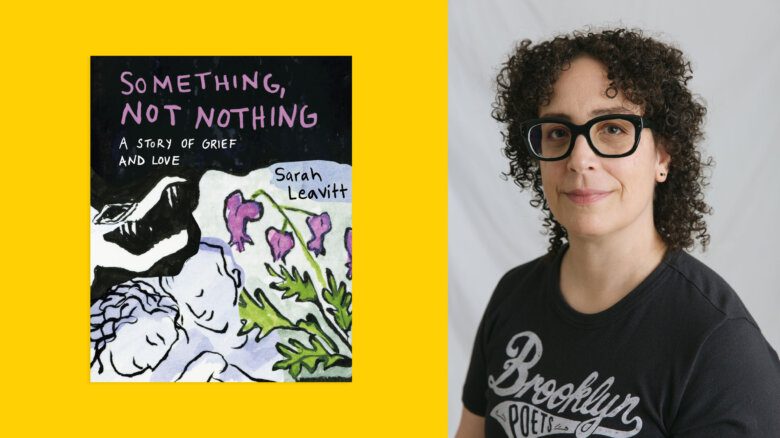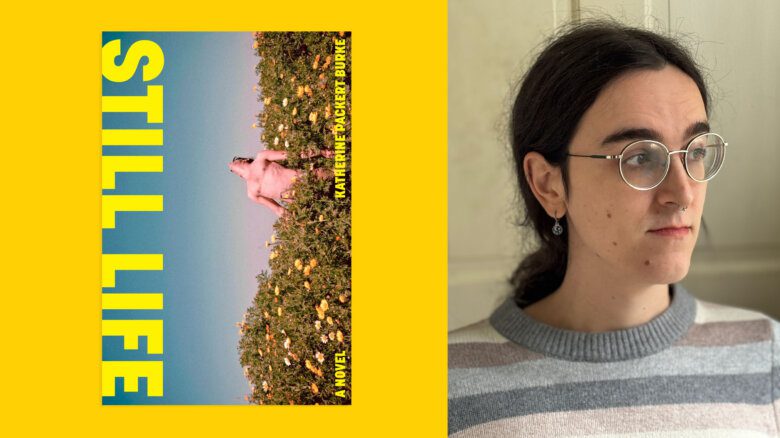If death could ever hope to court transcendence, it is in moments like these. On Jan. 30, 2021, songwriter, music producer, DJ, visionary avant-pop artist SOPHIE slipped and fell to her death on a rooftop in Athens while trying to catch sight of the full moon as it hung in the Grecian sky. She was 34 years old at the time of her passing, and her death brought an outpouring of grief as fans, collaborators and loved ones mourned the loss of a visionary artist who had shifted the tectonic plates of pop so dramatically with the work she had only just begun to bring into the world. SOPHIE became immortal in the aftermath, a monument of latex and pop built in her absence.
Now, three and a half years after her death, we are graced with a final remark: a posthumous release of the work she had been building in all the days and years before her untimely death—a self-titled album that reads as an epigraph, SOPHIE.
SOPHIE is a grand, unfinished project, completed as an act of love by her siblings Benny and Emily Long, which features collaborations from artists like Kim Petras, Doss, Hannah Diamond and Bibi Bourelly, to name just a few. It’s the last will and testament of the artist, tracks she had been working on as far back as the era around her 2015 debut, Product. The album serves as a reminder that SOPHIE is every bit the artist deserving of the praise that surrounds her name.
It opens with a stark, ambient movement, a haunting soundscape titled “Intro (The Full Horror)” that settles in like a fog over the water, receding as “Rawwwww (feat. Jozzy)” drops in hard and dirty, moving into the frenetic, grinding, reciprocating-saw rhythms of “Plunging Asymptote” with Juliana Huxtable. The sequencing of the album builds deliberate segments of movement, the more ambient and stark passages of the opening tracks give way to surefire dance-floor favourites, as Kim Petras and BC Kingdom bounce on “Reason Why.” “Live in My Truth” with BC Kingdom and Liz, a track initially recorded in an Airbnb while on tour that delivers on the promise of shifting boundaries of what is possible within the limitless potential of hip-hop and pop tracks.
There is a purpose behind all of this, the album as a stage work, opening moody and ambient, shifting into hyper-realized rhythms that buzz and fray at the edges, then into the transcendent triumph of the dance floor, hip-hop, hyperpop, spoken word.
The challenge, though, lies on the critical path of the record. The sequence, the tracks and the finished product were finalized without the artist’s guidance. The work unfinished by her death led to decisions ultimately being made for her, albeit decisions made with input from the people closest to her who knew her work best. Collaborators and family who knew her temperament and process better than anyone could.
SOPHIE, for many years, was a persona shrouded in mystery. Her name was a mask for an unseen force moulding and creating behind velvet curtains, producing tracks for artists like Madonna and Japanese pop singer Kyary Pamyu Pamyu and collaborating with the likes of Charli XCX, Vince Staples and more. The subterfuge of the unseen visionary was a tactic SOPHIE used to avoid perception in favour of letting her work serve as the voice of her spirit. She would obscure her identity in the press, employ drag performers as stand-ins for herself, and—before she came out publicly as trans—was even called out by The Fader and Grimes as exploiting womanhood in order to further her career. It wasn’t until 2017, with the release of “It’s Okay to Cry,” the lead single for what would eventually become her landmark 2018 album, Oil of Every Pearl’s Un-Insides, that she revealed the truth in her face and voice as a trans woman. Three short years later, she was gone.
In interviews following the album’s release, she spoke abstractly about her plans for the future of her work. She had new albums in mind that defied categorization just as easily as the artist herself. In an article in Spanish cultural magazine Mondo Sonoro, she’s quoted (through a translator) as saying “The barrier between the EP and the LP is becoming more diffuse, that’s why I can not define it.” A future, imprecise and infinite, lay ahead.
At least that was the promise. Whatever she had planned was cut tragically short that night under a lingering moon, leaving only the news that she had been deep in the weeds on a new album at the time of her passing. There was no word of how far along she was, or what the end results might be. The already amorphous definition of a record stretched and constrained all at once by its own mercurial nature.
“SOPHIE, even in her absence, has remained every bit an integral part of pop’s architecture.”
In the years since her passing, pop music has done what pop music has always done: grown and shifted, marking time as the tones of the past and the promise of the future conspire to craft the timbre of the present. SOPHIE, even in her absence, has remained every bit an integral part of pop’s architecture. SOPHIE’s influence is felt everywhere; in the sweat bouncing on skin on dance floors thriving under neon lights, wafting like smoke from the remnants of parties that rage on until the moon has gone once more and living on in the work of artists who were lifted up in her rising tide. There was no more sterling example than on this summer’s era-defining pop record, brat, where her friend and frequent collaborator Charli XCX immortalized SOPHIE on “So I,” a tender and beautiful tribute to the memory of her beloved friend, and calling out her name on “Club Classics,” with the lyric “I wanna dance with George, I wanna dance to SOPHIE.”
SOPHIE is no longer with us. She isn’t here to feel the love and admiration of her work, nor is she here to speak to the moment and the shifting rhythm in pop music. She lives on not just in the work she left behind but as a memory of artistry, a name to call out in deference, or one to drop in need of the appearance of connection. St. Vincent infamously referenced SOPHIE in her song “Sweetest Fruit” from her 2024 album All Born Screaming, which opens with “My Sophie climbed the roof to get a better view of the moon, moon, my god, then one wrong stair took her down to the depths, but for a minute, what a view.”
St. Vincent’s tribute, that claimed ownership over a woman she had never actually met, was seen by some as exploitative, something Annie Clark herself was hesitant to discuss in interviews, telling The Guardian earlier this year “The internet twists things, and I don’t want it to be seen like I’m trying to capitalize on somebody’s death.”
SOPHIE lived in mystery, a woman questioned and critiqued, then emerged to great adoration and fanfare, speaking at length about her love of music, transness and the people she felt deserved elevation, only to exit before her time was due. Still, though, she remains with us, the whisper of an idea on the lips of anyone who dreams of holding on to the shared breath that runs through her work and building on the ideas left behind.
“She has become an icon in a death mask, like many pop stars before her.”
Hers is an easy name to conjure for clout, because she cannot defend or deny the connective tissue. She has become an icon in a death mask, like many pop stars before her. On Sept. 17, a Google Doodle on their homepage honoured her for what would have been her 38th birthday. There is even a minor planet given her name, Sophiexeon, in June 2021, bestowed in deference by the International Astronomical Union.
How to critique an album that the creator cannot answer to is a challenging task, almost akin to proofreading the notes in the margin of a funeral program. SOPHIE is the final word of the artist, given form by others and shaped into a fitting farewell that might never feel like enough. She was an artist who never felt ready to say goodbye, an admittance shared by Benny Long, who tells the New York Times in a recent interview, “Sophie would never want to finish anything. She’d always want to move on to the next thing. She was just wanting to create, create, create, which now I’m super thankful for. But at the time I was like, ‘Should we not just finish this?’”
There is an imperfection to the posthumous album as finished by others. The departed can’t give context, speak to themes and fears and misunderstandings. They can’t feel the heat rise from a sweaty room as the beat swells and captures the hearts of all who feel it pulsing within them. SOPHIE never got to see a planet given her name, even as she grasped for a vision of the moon, but she was here long enough to build the work that will live long after we all leave this place as well. Perhaps then the point is not to critique, but rather to just appreciate the time we are given to say goodbye. There is a finality within every turn of SOPHIE, and it is often far too difficult to admit that the party has already ended and we will eventually all say goodbye that one final time, even as the dance floor surges under our feet.


 Why you can trust Xtra
Why you can trust Xtra


